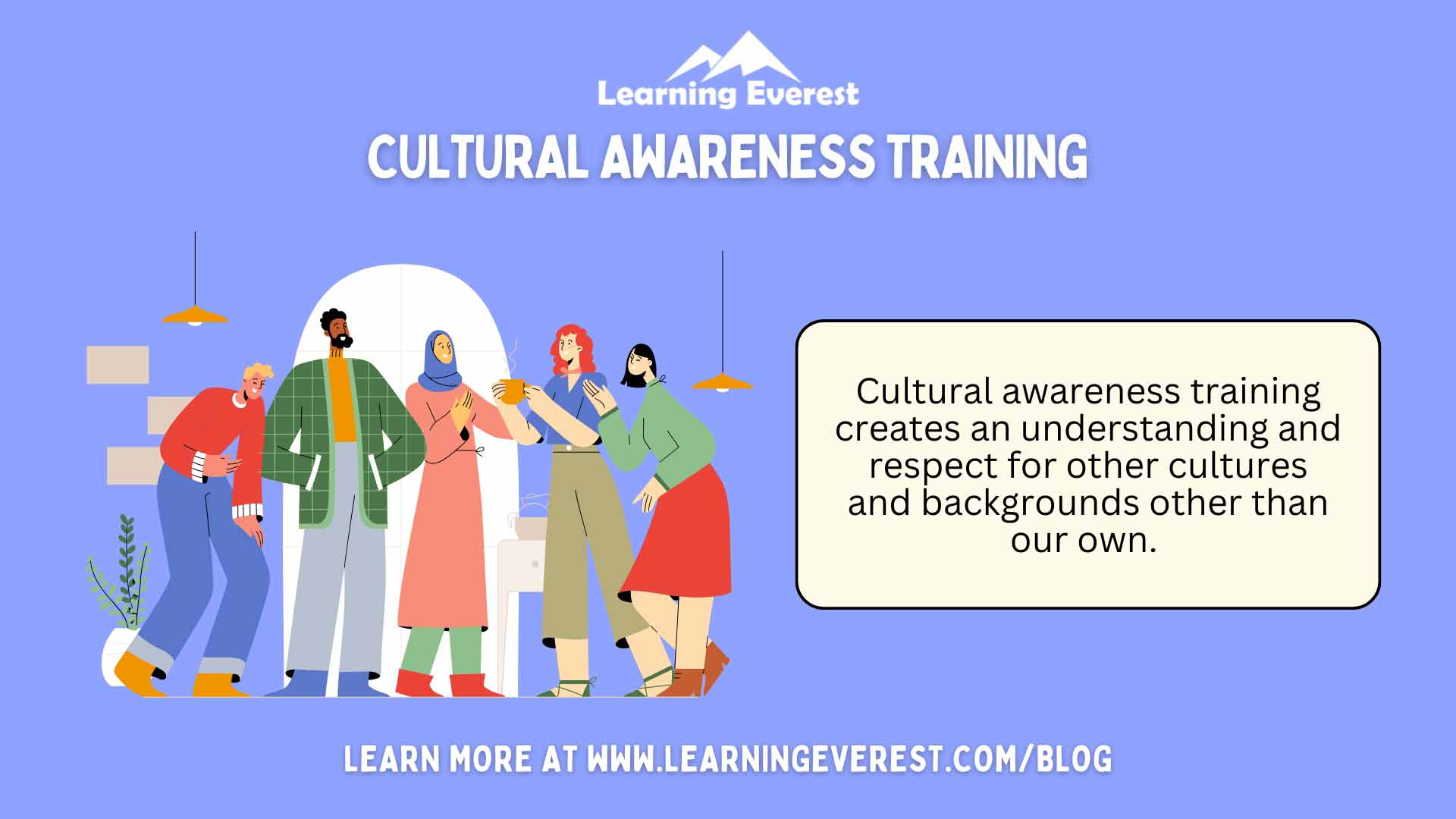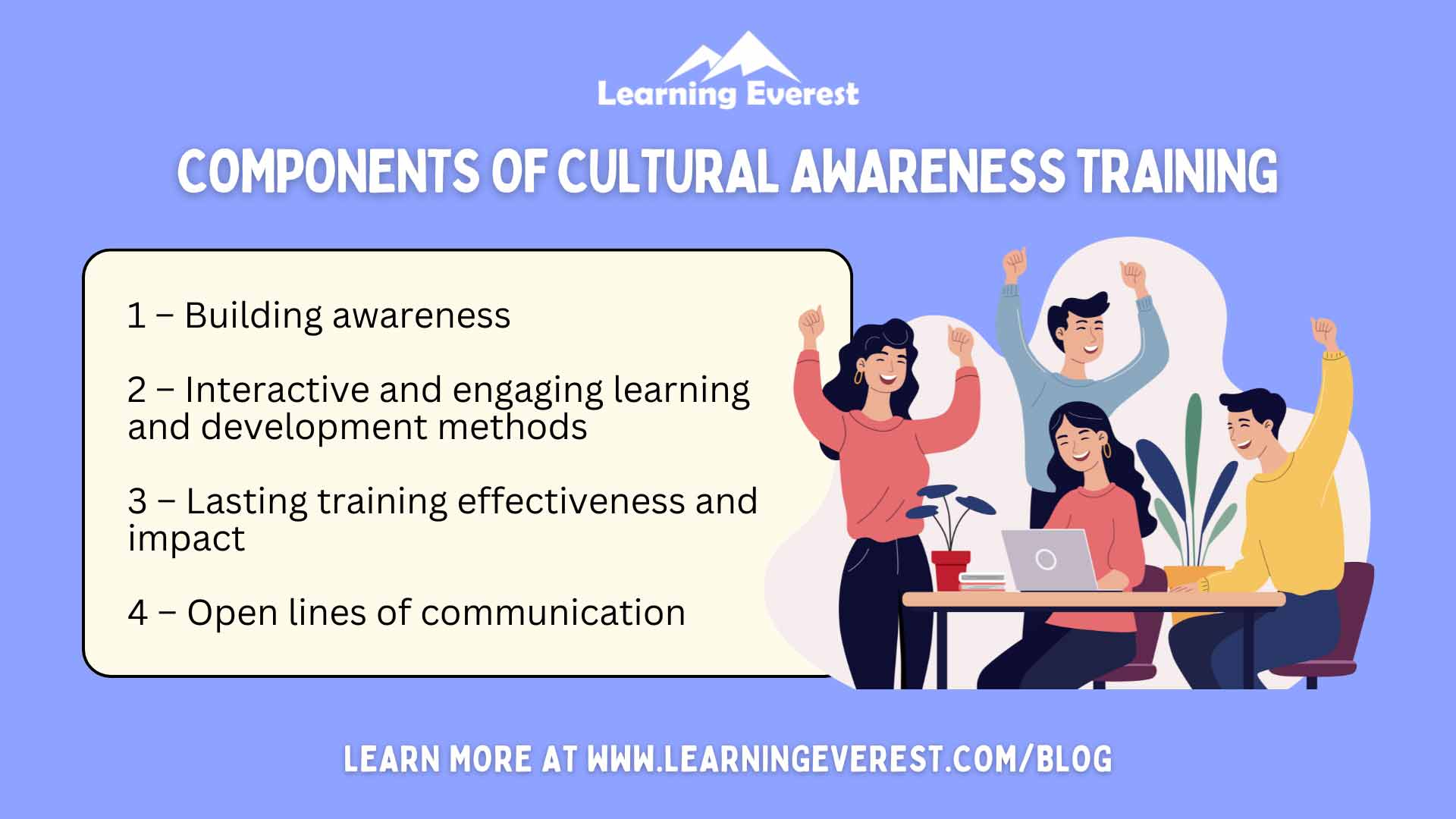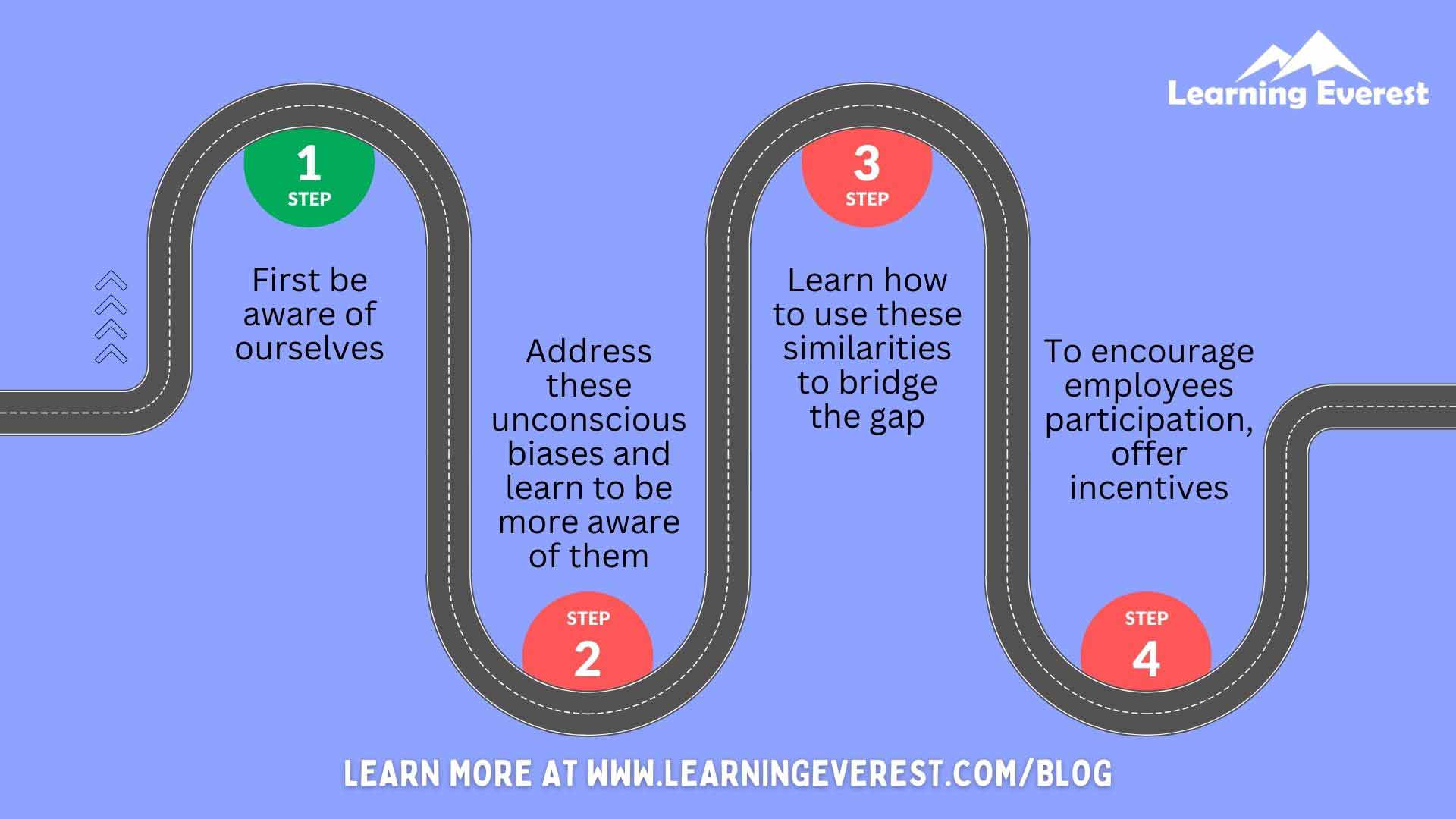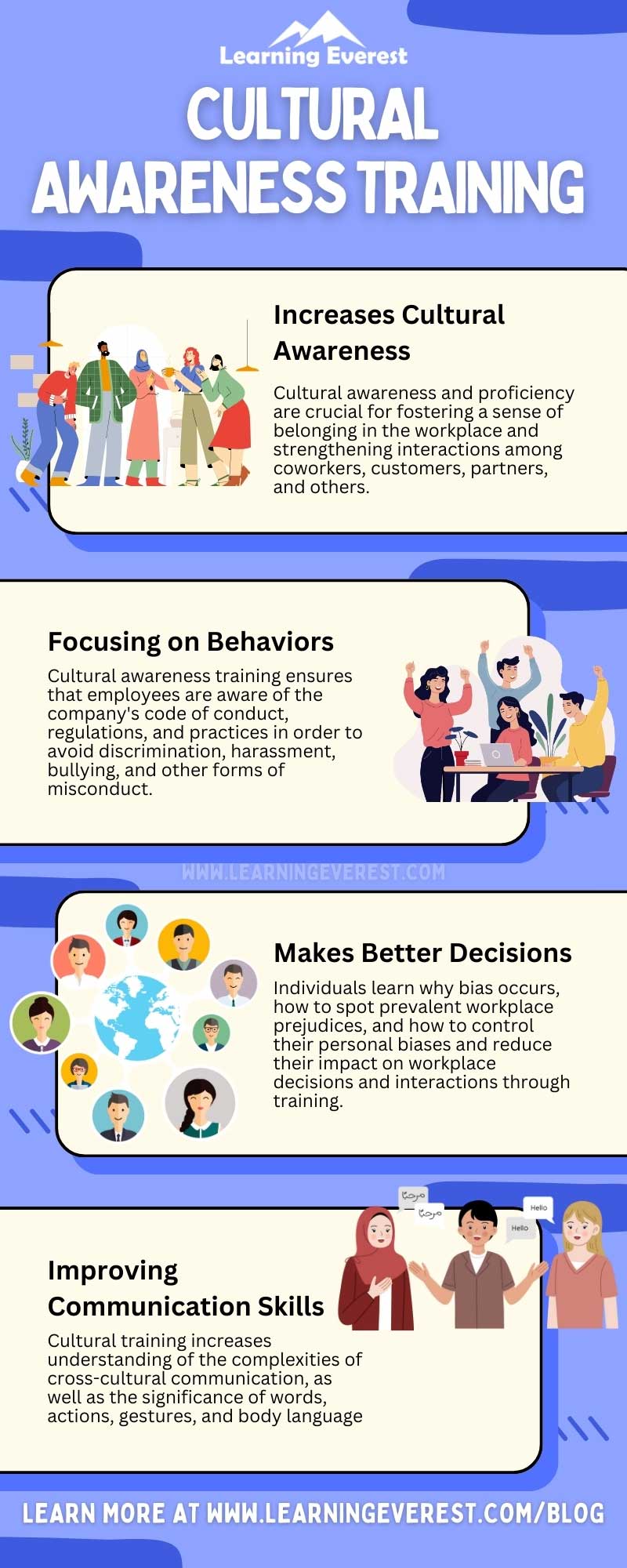When people make favorable or unfavorable judgments about others based on stereotypes or preconceived ideas, this is known as unconscious or implicit bias. While everyone has unconscious biases, they can cause problems and lead to biased judgments when they manifest in the job.
The solution? Cultural awareness training program.
Table of Contents
- What is the meaning of cultural awareness training
- Why do we need cultural awareness training
- The key components of effective cultural awareness training
- How to design a cultural awareness training course
- Conclusion
- Infographic
- Knowledge check!
- Frequently Asked Questions (FAQs)
- What is the meaning of cultural awareness training?
- What is the objective of cultural training?
- What is organizational culture?
What is the meaning of cultural awareness training
Cultural awareness training creates an understanding and respect for other cultures and backgrounds other than our own. It teaches you how to address your own unconscious bias and how to consciously make the decision to respect others. This means appreciating the value that each unique culture brings and not regarding one’s own culture as superior.

Cultural Awareness Training
You can read our blog on Cross-cultural training: Definition, elements, benefits and examples to learn more.
Why do we need cultural awareness training
A 2020 McKinsey report showed organization that took action to create and promote inclusive behavior were more likely to financially outperform the other organization in the study.
Whether it is your team members or the business partners your organization may be working with, a multicultural workforce has become the normal. Generally, this means that having an understanding of the people you are working with, their culture, and the importance of workplace diversity is imperative to your organization’s productivity and success. Cultural awareness training is designed to help individuals in global organizations create a framework for positive engagement and collaboration within diverse cultural environments. This training does this by enhancing awareness and sensitivity towards cultural differences, increasing cultural understanding, and building necessary communication skills.
The goal of cultural awareness training is to help the employees understand and adapt to various cultures, mainly in virtual workplaces where borders are removed. It helps your employees feel seen and understood. It also enhances empathy for coworkers, and it is important for effective teamwork in international organizations.
Want to learn more about cultural intelligence? Read our blog on What is Cultural Intelligence to learn more.
The key components of effective cultural awareness training
When implemented successfully, cultural awareness training can directly address the frustration or stress in employees due to a lack of organizational sensitivity to cultural norms. While there is no single approach to cultural awareness training, here are some key elements you’ll need to pay attention to in order to create a successful cultural awareness training program:

Components of Cultural Awareness Training
Let’s discuss them in detail.
1 – Building awareness
Cultural differences are valuable, as we can all learn from each other. By increasing awareness, we can identify that cultural differences exist and work to understand various cultural behaviors and motivators. We can avoid cultural stereotypes and become conscious of our pre-existing cultural biases. From there on, cultural awareness and understanding can help employees to gain control over their own cultural behaviors and actions to adapt to each other, make sure clarity in communication, and reduce potential conflict.
2 – Interactive and engaging learning and development methods
In order for a learning program to be successful, it must be interactive and engaging. it is effective for cultural awareness training programs as well. Having higher levels of engagement in your training and development programs usually generates higher levels of active participation, which is important to the effectiveness of your training and learnng program. This allows employees to increase a practical understanding of how cultural awareness training can be implemented in the workplace. For instance, a role-playing exercise workshop can help not just with guiding cultural discrepancies but also with conflict resolution.
3 – Lasting training effectiveness and impact
For some global organizations, rapid growth into a global workplace can leave employees feeling unsure and hesitant of how to proceed in relationships with their new colleagues. While a cultural awareness training program concentrates mainly on interpersonal skills such as empathy, sympathy and adaptability, a balanced program should also impart other skills like communication, leadership, and problem resolution. The tools and practices found in a balanced cultural awareness training program should help employees in adapting to their changing workforce quickly.
4 – Open lines of communication
Learning to understand and recognize cultural differences doesn’t end with cross-cultural awareness training but continues into the day-to-day of the workplace. As such, having open lines of communication, two-way communication is crucial for encouraging continuous learning and development. When employees communicate respectfully and transparently, they continue share knowledge from each other. By improving active listening skills, soft skills, communication problems can be resolved as they happen and can help build an inclusive work culture where multiculturalism can thrive.
How to design a cultural awareness training course

cultural awareness training
Let’s discuss this in detail.
Step 1 – Self-assessment
The first step in learning how to be culturally aware is to first be aware of ourselves. With a self-assessment, organizational leaders and employees can get feedback about their culture and cultural expectations. This can help highlight any unknown biases your people aren’t aware they even have. These assessments can also help learning leaders measure the organization’s level of cultural competency and pinpoint any areas of improvement.
Step 2 – Address unconscious bias
What many people don’t realize is that we all have unconscious biases. Ingrained preferences that guide our decisions and behaviors. When we feel biased toward something, we give it the halo effect. But when we are confronted with something different than ourselves or what we are used to, we naturally try to find flaws to support our biases. This can negatively affect team communication. This is why a critical step in cultural awareness training is to address these unconscious biases and learn to be more aware of them. Training must identify what our initial perceptions are and work to make sure that they align with an interculturally competent workplace.
Step 3 – Bridge the gap
Despite our differences, everyone around the globe has similarities. What people need to learn is how to use these similarities to bridge the gap. After you understand the cultural awareness gaps and have a framework that aligns with your organizational culture, you can create employee cultural training programs to help bridge the awareness gaps. This often include some combination of internal learning and development, external courses, workshops, seminars, online courses, mentoring, job rotations, and certification programs. To help their people bridge the gap, learning leaders can use storytelling to help learners relate with someone from another culture and recognize the similarities we all share as human beings.
Step 4 – Reward participation
Not everyone is motivated to better themselves by developing cultural awareness skills. To encourage employees participation, offer incentives. This could be as small as some monetary reward for earning a awareness certification or an increase in pay for passing a course. For the cultural awareness training program to be successful, your leaders/managers must actively support and promote your upskilling initiatives. While participation may need to be limited during difficult times for your team member’s productivity, employees should not feel guilty or discomforted for participating in cultural awareness development programs.
Conclusion
Organizations that have engaged with cultural awareness training are contributing towards a more inclusive, diverse, and welcoming corporation. We are proud of the relationships we’ve established and the influence we’ve had on the organizations that engage us for tailored training sessions. By participating in our cultural awareness training, your organization will increase its cultural competence and pave the way for creating a welcoming and becoming more inclusive workplace.
Contact us to start your journey.
Infographic
Knowledge check!
Frequently Asked Questions (FAQs)
What is the meaning of cultural awareness training?
A: Cultural awareness training creates an understanding and respect for other cultures and backgrounds other than our own
What is the objective of cultural training?
A: The goal of cultural awareness training is to help the employees understand and adapt to various cultures, mainly in virtual workplaces where borders are removed.
What is organizational culture?
A: Organizational culture is the collection of values, goals, and traditions that guide and inform the actions of all team members.






